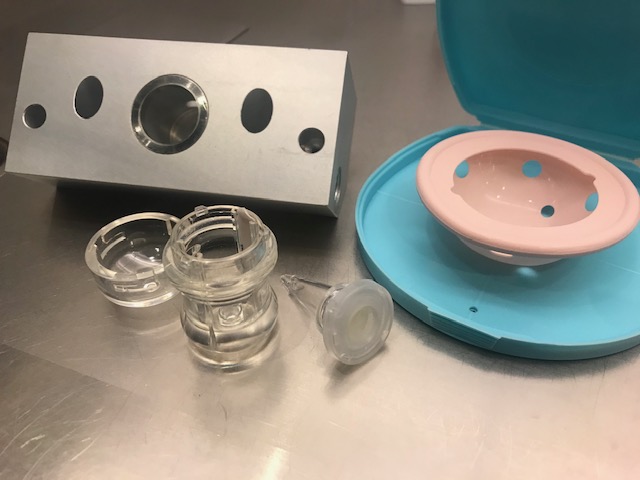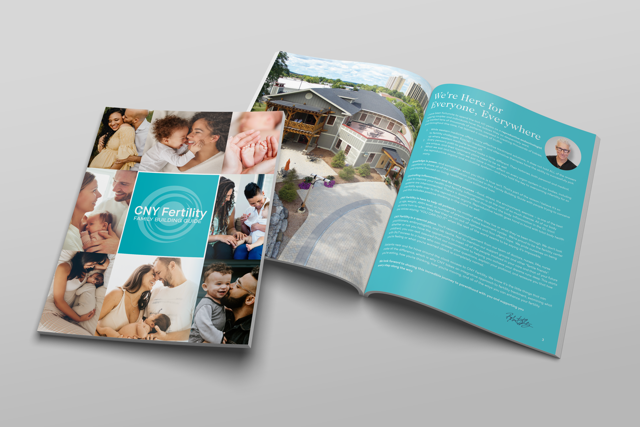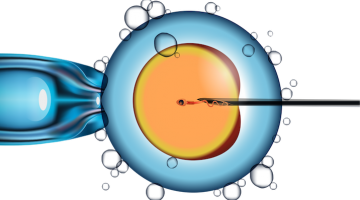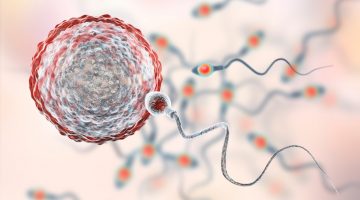INVOcell – What it is, Treatment Process, Cost, and IVF Comparison
INVOcell is not offered at CNY Fertility. Continue reading to learn more about INVOcell or our alternative to INVOcell, our very own affordable IVF with ICSI, starting at just $3,999.

Fast Facts About INVOcell
- INVOcell is an intravaginal culture (IVC) system that is used as an IVF alternative for the treatment of infertility.
- The INVOcell is a thumb-sized medical-grade plastic device composed of two main components. The incubation component holds the sperm, eggs, and developing embryos. The retention device holds the incubation component securely inside the vagina.
- The treatment process using INVOcell is very similar to conventional IVF. The difference being that fertilization and subsequent early embryo development happen inside the INVOcell device (rather than an embryology lab). The device is then placed inside the woman’s vagina for a brief incubation period spanning a few days.
- INVOcell is marketed as a more cost-effective alternative to IVF, but those claims are highly dependent upon a few factors that are simply not true across the board. For instance, IVF with ICSI at CNY starts at only $3,999.
- INVOcell is not offered at CNY Fertility.
What is the INVOcell
INVOcell is the first Intravaginal Culture (IVC) system granted FDA clearance in the United States.
The INVOcell is a unique device that allows egg and sperm to fertilize in a small container (about the size of a thumb) within your body. This allows improved outcomes compared with IUI for people who struggle with the idea of fertilization happening in a laboratory (as it does with IVF) instead of the woman’s body.
INVOcell is also more affordable than standard IVF, largely due to a reduction in the use of medications. Another draw of INVOCEL is psychological: fertilization and incubation occur in a way that is similar to natural conception.
How It Works
The INVOcell process has a lot in common with the IVF Process. In fact, many stages of the INVOcell treatment mirror those of in vitro fertilization. The only difference is where fertilization and embryo development take place. That said, the INVOcell treatment has four additional phases:
- Ovarian Stimulation: The female takes hormone-based stimulation medications to entice the ovaries to grow more mature, high-quality eggs than they normally would.
- Egg Retrieval: The surgical procedure to remove the eggs from the ovaries.
- The INVOcell: The egg and sperm are placed inside the INVOcell device for fertilization and early embryonic development.
- Embryo Transfer: The developed embryos are removed from the INVOcell device. One (or sometimes two) of the embryos are then transferred back into the woman’s uterus. All remaining embryos are frozen using a flash-freezing technology called vitrification.
Ovarian Stimulation
During the INVOcell Procedure, the patient undergoes ovarian stimulation using hormone-based medications.
The same process takes place in IVF (and IUI with gonadotropins). The purpose of ovarian stimulation is to develop as many high-quality eggs as possible. With more more eggs, more embryos can be created leading to a higher chance of a live birth from the INVOcell treatment cycle.
Many INVO cycles will result in multiple embryos. One or two of these will later be transferred. The remaining embryos can be frozen for future use.
If a woman has a regular menstrual cycle, they will have an office visit known as a “baseline” appointment on day 2-4 of their cycle. During this visit, a doctor will measure their “baseline” follicular size, lining, and hormone levels. In most cases, the woman will start the injectable medications for ovarian stimulation later that day and continue for approximately ten days.
Over these ten days, the woman will have monitoring appointments every few days to track uterine lining, and follicular and hormonal development. This ensures a safe and properly timed INVOcell treatment.
Once the egg-containing follicles reach the appropriate size, a final “trigger” medication will be used to promote the final maturation of the eggs. The timing of this trigger medication must be followed exactly. The trigger medication induces the final maturation and ovulation of the eggs. For the INVOcell procedure, egg retrieval must occur before the eggs are truly ovulated.
Egg Retrieval Procedure
Egg retrieval is the most invasive stage of the INVOcell (and IVF) procedure. That said, it is considered a minimally invasive outpatient procedure. The retrieval takes place 35 hours after the trigger shot in order to collect the eggs from the ovaries before they are ovulated.
The procedure is performed under moderate sedation using MAC anesthesia by a fertility doctor. The procedure itself typically lasts only 5-10 minutes. During the egg retrieval procedure, the doctor will use an ultrasound to guide an aspiratory needle safely through the vaginal wall and drain the fluid from the follicles on the surface of the ovaries. This follicular fluid contains the mature eggs.
The follicular fluid containing the eggs is then immediately transported down the hall to the embryology lab, where embryologists sort through it and find and isolate the mature eggs.
The number of eggs retrieved is influenced by your age, medical history, fertility diagnosis, medication protocol, and response to medications.
Fertilization and Early Embryonic Development
Once the eggs are retrieved and sperm is collected, they are placed into the INVOcell incubation device. The INVOcell incubation device is then placed in the INVOcell retention device, which helps it stay securely in the vaginal cavity.
The entire INVOcell device is then placed inside the vaginal cavity to naturally incubate the eggs and sperm and to facilitate fertilization and early embryo development.
After incubation for around 3 to 5 days, the device is removed and the embryos are transferred back to the natural environment of the woman’s body. During this time, it is important that the woman avoid strenuous physical activity and activities that could drastically change the temperature of the vagina, like taking a bath or using a sauna,
With the INVO Procedure, the temperature, gas concentration, and physiological pH stay stable throughout the incubation period. There is no interference in the vaginal incubation environment which occurs in incubators due to the opening and closing of the incubator doors as well as the cycling of the temperature (thermostat).
The INVOcell Culture Device uses the body as a natural incubator. The vaginal cavity is a more stable environment than an incubator during fertilization and early embryo development. The device maintains the proper pH of the culture medium using the human body temperature and gas concentration throughout the incubation period.
For patients who desire that their embryos are biopsied and frozen for genetic testing, Intracytoplasmic sperm injection (ICSI) is a viable alternative to INVOcell.
Embryo Transfer
After the incubation period in which fertilization and early embryonic development take place the doctor will remove the device from the vagina. The quantity and quality of the embryos will be examined by the embryologists in the embryology lab.
In most cases, one, but sometimes two embryos are transferred into the woman’s uterus. During the embryo transfer process, the embryo/s are loaded into a transfer catheter, gently inserted through the vagina and cervix, and deposited into the uterus to implant and continue to develop. If the embryo sticks, pregnancy results.
If there are surplus embryos, they may be frozen and used for subsequent Frozen Embryo Transfers.
Cost
INVOcell is often touted as a more affordable option to IVF. This, however, is based on a few assumptions that may be true in some cases, but are not true across the board.
These assumptions are as follows:
- The average cost of In Vitro Fertilization (IVF) is around $20,000 for a single cycle. However, that is an average, and the cost can vary quite a bit from clinic to clinic. For example, the total cost of IVF at CNY Fertility is around $7,000.
- Part of the claim that INVOcell is more affordable is that it is administered with a low or mild regiment of stimulating medications. However, the same cost-saving approach is used for the mini IVF procedure, which has a higher success rate.
Because the claim that INVOcell is more affordable than IVF is reliant upon these two assumptions ($20,000 cost of IVF and a minimal stimulation protocol) it is not always true.
For instance, the base cost of IVF with ICSI, not including monitoring or medications, is just $3,999.
IVF Cost Calculator
Automatically Included
- {{ tick.item }}
Sample Payment Calculator: Self Pay Pricing
- {{getTreatmentName()}} {{ treatment_price_discount|toCurrency }}
National Average {{ this.treatment_price_others|toCurrency}} - {{ treatment.data.price.monitor.remote.label }} Remote Cycle Management {{ total_monitor.cny | toCurrency }}{{ treatment.data.price.monitor.in_house.label }} In House Monitoring {{ total_monitor.cny | toCurrency }}{{ treatment.data.price.monitor.remote.note_calc | stripHTML }} {{ treatment.data.price.monitor.in_house.note_calc | stripHTML }} Third-party fixed fee (SAMA) Third Party {{ total_monitor.others | toCurrency }}{{ treatment.data.price.reciprocal_ivf.note_calc || "Reciprocal IVF requires both partners to be monitored" }} {{ treatment.data.price.frozen_transfer.note_calc_monitor || "" }}
- {{ treatment.data.price.frozen_transfer.label }} Frozen Transfer {{treatment.data.price.frozen_transfer.cny|toCurrency}}
- {{ treatment.data.price.cryo_preserve.label }} Cryopreservation + 1yr Storage {{treatment.data.price.cryo_preserve.cny|toCurrency}}{{treatment.data.price.cryo_preserve.note_calc | stripHTML}} Third Party {{treatment.data.price.cryo_preserve.others|toCurrency}}
- {{ treatment.data.price.genetic_testing.label }} Genetic Testing {{treatment.data.price.genetic_testing.cny|toCurrency}}{{treatment.data.price.genetic_testing.note_calc | stripHTML}} Third Party {{treatment.data.price.genetic_testing.third_party|toCurrency}}
- {{ treatment.data.price.medication.label }} Medication Estimate {{total_medication.cny|toCurrency}}{{total_medication.note_calc | stripHTML}} Third Party {{total_medication.third_party|toCurrency}}
- {{ treatment.data.price.medication.label }} Medication Estimate {{total_medication.cny|toCurrency}}{{total_medication.note_calc | stripHTML}} Third Party {{total_medication.third_party|toCurrency}}
- {{ treatment.data.price.zymot.label }} ZyMōt Sperm Processing ${{treatment.data.price.zymot.cny}}{{ treatment.data.price.zymot.note_calc | stripHTML}} Third Party ${{treatment.data.price.zymot.third_party}}
- {{ treatment.data.price.pregmune.label }} Pregmune Reproductive Immunology Testing {{treatment.data.price.pregmune.cny|toCurrency}}{{ treatment.data.price.pregmune.note_calc | stripHTML}} Third Party {{treatment.data.price.pregmune.third_party|toCurrency}}
- {{ treatment.data.price.donor_eggs.label }} Donor eggs {{total_donor_eggs.cny|toCurrency}}{{treatment.data.price.donor_eggs.note_calc | stripHTML}} Third Party {{total_donor_eggs.others|toCurrency}}
- {{ treatment.data.price.donor_sperm.label }} Donor sperm {{treatment.data.price.donor_sperm.cny|toCurrency}}{{treatment.data.price.donor_sperm.note_calc | stripHTML}} Third Party {{treatment.data.price.donor_sperm.others|toCurrency}}
- {{ treatment.data.price.donor_eggs.label }} Donor Package {{total_donor_package.cny|toCurrency}}{{treatment.data.price.donor_package.note_calc | stripHTML}} Third Party {{total_donor_package.others|toCurrency}}
- {{ treatment.data.price.gestational_surrogacy.label }} Gestational Surrogacy {{treatment.data.price.gestational_surrogacy.cny|toCurrency}}{{treatment.data.price.gestational_surrogacy.note_calc | stripHTML}} Third Party {{treatment.data.price.gestational_surrogacy.others|toCurrency}}
- {{treatment.data.price.split_cycle.label ? treatment.data.price.split_cycle.label : "Split Cycle Discount" }} {{discount_split_cycle|toCurrency}}
- 5% Military & Veteran Discount {{discount|toCurrency}}
- Installments Fee {{finance.fee|toCurrency}}
- Total to CNY {{total.total | toCurrency}}
Estimated 3rd Party Costs {{total.third_party| toCurrency}}
Grand Total {{(total.total + total.third_party)| toCurrency}}
National Average: {{total.national|toCurrency}} - Down Payment to CNY{{finance.payment_down_amount|toCurrency(2)}}
- Monthly Payment to CNY{{finance.monthly_payment|toCurrency(2)}}
{{ treatments[treatment_selected]['data']['footnote'] }}
The above calculation is for simulation purposes only. It is reflective of self-pay pricing, includes highly variable estimates paid to CNY and third parties, and national averages obtained through internal research, FertilityIQ, ASRM, and Resolve. Billing through insurance will likely result in substantially different fees. CNY Fertility does not warrant or guarantee any price for services conducted or rendered by a third party and recommends everyone obtain written estimates from any medical facility involved in your treatment as well as verification of coverage from your insurance company prior to beginning treatment.
1 USD = {{currency.rates[currentCurrency]}} {{currentCurrency}}
Last Update {{currency.last_update}}
INVOcell Success Rates
According to a clinical study run by INVOcell, success rates using INVOcell are higher than that of intrauterine insemination commonly known as artificial insemination, but lower than that of IVF.
The clinical trail involved 450 cycles, 421 of which resulted in embryo transfers and about 25% resulted in live births compared to roughly 10% for IUIs and near 50% for IVF.
INVOcell Availability at CNY Fertility
Most people pursue INVOcell as a means of growing their family with a reduced cost. But IVF with ICSI at CNY Fertility is both more affordable and more successful than INVOcell, so it is very rarely performed. We do have the ability to use INVOcell, but we do not keep INVOcell devices at our office. If you pursue INVOcell at CNY, cycles may take multiple months to coordinate.
The Bottom Line
INVOcell is marketed as a more natural method of fertility treatment than IVF. Though it is more effective than IUI, it is significantly less effective than IVF.
Whether or not INVOcell is more affordable than conventional or ICSI IVF depends on where you plan to have your treatment done and the medication protocol used. For patients who have failed IUIs but are not able to do IVF due to their belief system, INVOcell may be the best option available.
To learn more about how people travel to CNY Fertility from around the country for our affordable IVF, check out our travel page. If you’d like to discuss your goals with a medical provider and get the ball rolling, you can schedule a consultation by calling us at 844-315-2229 or by filling out our online consult request form.









